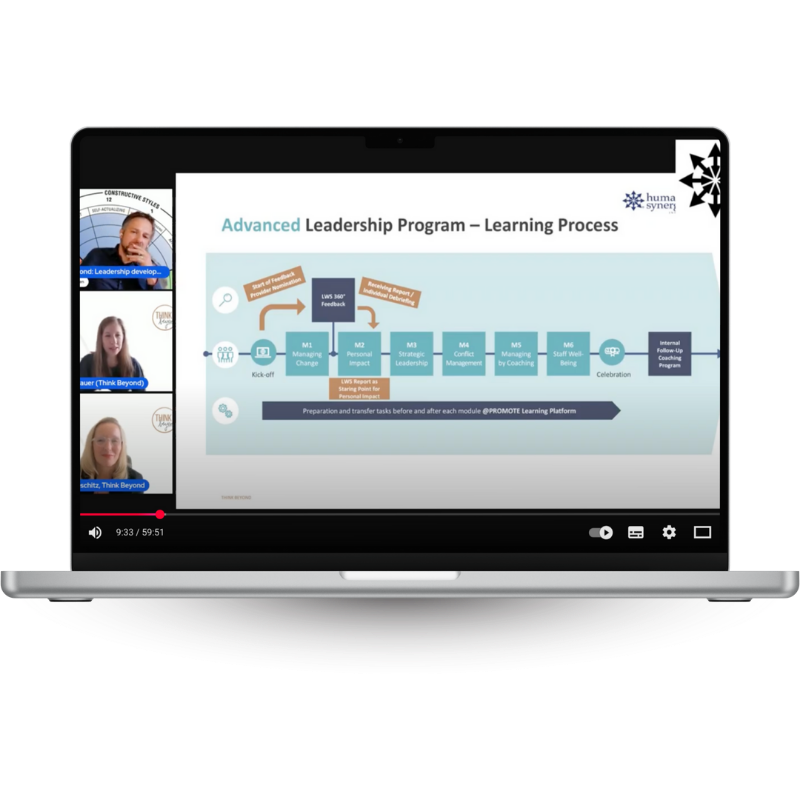How can we elevate global programs with the 360°-feedback tool LWS? This is part 3 of the 4-part series on this topic, where we use a real-life case study to discuss success factors for global programs and dive deep into transfer design and behavioral change. In here in detail: Leadership Development ROI. If you missed part 1 and 2, you might want to read why your current programs aren’t sticking (pt1) or how framework based 360° feedback tools might benefit your programs (pt2).
Let’s dive into part 3.
Table of contents
We’ve all been in tight budget meetings where the inevitable question was: “What’s the ROI on this leadership program?” Many organizations are doing excellent work in leadership development and demonstrating real impact. Yet the pressure to prove value has never been higher. When development budgets are scrutinized alongside operational costs, we need to show more than satisfaction scores.
The typical metrics we report:
- “Participants rated it 4.5 out of 5”
- “94% said they’d recommend it to colleagues”
- “Leaders found it very valuable”
These aren’t bad metrics. They tell us something important about the experience. But they don’t answer the question executives are really asking: “Are leaders doing anything differently three months later—and is that difference creating better outcomes for their teams and the organization?” So they don’t give any numbers on Leadership Development ROI. And that’s exactly the measurement challenge we’re addressing today. Today, we’re exploring how to actually measure what matters in leadership development, why re-measurement is critical, and what transformation looks like when you can prove it’s happening.
1. The Three Phases of Behavior Change (And Where Most Programs Fail)
Before we dive into measurement, let’s understand what we’re actually trying to measure: behavior change. Not knowledge acquisition. Not intention to change. Actual, observable, sustained shifts in how leaders show up and interact with their teams. Behavior change moves through three distinct phases, and understanding these phases is crucial because most leadership programs fail at Phase 2.
Phase 1: Awareness
This is understanding the message. With 360° feedback like LWS, awareness means:
- Reading your report
- Seeing the data and patterns
- Understanding what the Circumplex says about constructive versus defensive behaviors
- Recognizing what your feedback is telling you
Most programs do Phase 1 reasonably well. We’re effective at delivering information, explaining concepts, and helping leaders understand their reports.
The trap: We often stop here, assuming that awareness equals change. It doesn’t.
Phase 2: Acceptance
Here’s where it gets challenging. Acceptance goes much deeper than awareness. It’s not just “I understand what the feedback says.” It’s:
- “This is really happening” (not just one person’s opinion or a bad day)
- “It has real consequences” (both positive and negative)
- “It matters enough to be a priority” (not just something to address if I have time)
- “I’m the only one who can change this” (not my team’s problem, or my boss’s problem—mine)
- “And I’m capable of changing it” (this isn’t fixed; I can develop)
Acceptance requires time. It requires connecting the dots between feedback and actual situations you’ve experienced. It requires recognizing patterns you weren’t conscious of before. You cannot rush acceptance. And if leaders don’t genuinely accept that their development areas are real and important, they won’t commit to changing them.
Why programs fail here: We give leaders their feedback, have a debrief session, and expect them to move immediately to action. But without time and structure for genuine acceptance, the action never happens—or it’s superficial and short-lived.
Phase 3: Action
Only when leaders have truly accepted their feedback are they ready for meaningful action AND the action steps become clear. Leaders know exactly which situations trigger their defensive behaviors. They recognize the patterns. They have clarity on what they want to do differently. Action without acceptance is just going through the motions. Leaders might try a new behavior once or twice, but without deep acceptance that the pattern is real and important, they’ll revert to old habits as soon as things get busy or stressful.
In the program we’re examining, leaders don’t just get their LWS feedback and move on. They:
- Process it individually (time for initial acceptance)
- Discuss it in a trusted cohort (social validation deepens acceptance)
- Apply insights across multiple modules over months (ongoing acceptance and action)
- See the pattern play out in real situations (experiential acceptance)
- Get feedback from stakeholders on changes they’re making (external validation reinforces action)
By the time these leaders reach Month 10 which is the final month of the program, they’re not in Phase 1 or 2. They’re deep into Phase 3, with embodied understanding and consistent new behaviors.
2. The Power of Re-Measurement: Why Measuring Twice Changes Everything
Here’s where Human Synergistics’ development tool LWS becomes particularly powerful: the ability to re-measure and demonstrate actual behavior change. Most leadership programs measure once (if they measure at all beyond satisfaction surveys). You get your 360° feedback, work on development, and… that’s it. Maybe you have a vague sense that you’ve improved, but you don’t know for sure. And you certainly can’t prove it. Re-measurement with LWS changes the entire dynamic. It creates value at three distinct levels:
Level 1: For Individual Participants
When leaders know they’ll be re-measured at the end of the program, it often has a strong effect. The development work gets real. It’s not just about understanding your patterns or intending to change. It’s about actually doing the work because you’ll see whether it made a difference. One facilitator described it perfectly:
“Leaders get more curious because they’ve put in the effort, and now they want to see if it shows. Initially some might be nervous—what if nothing changed? But leaders who’ve been genuinely working on their development want to see if their efforts made a difference.”
And when the re-measurement shows progress—when their team members, peers, and managers report noticing positive changes—it’s incredibly validating.
“My efforts were noticed. The changes I’ve been working on are visible to others. This work is paying off.”
That validation creates a powerful feedback loop. Leaders see that behavior change is possible, that their efforts matter, and that continued development is worthwhile. Many leaders request to continue the work with their own teams.
Level 2: For the Organization
Re-measurement provides something L&D functions desperately need: evidence of impact at scale.
When you can show that:
- 85% of participants demonstrated measurable improvement in constructive leadership behaviors
- Aggressive-defensive patterns decreased by an average of 23%
- Humanistic-encouraging behaviors (coaching, developing others) increased by 31%
…you’re not talking about “soft skills” anymore. You’re talking about documented capability development across your leadership population. This is particularly valuable when you’re trying to demonstrate that long-term programs (like a 12-month journey) are worth the investment. Yes, they cost more than a two-day workshop. But here’s the data showing they produce actual, measurable behavior change that two-day workshops simply don’t achieve.
One program sponsor noted:
“The ability to show concrete behavioral shifts helps us justify continued investment in leadership development. It’s not just about what participants say they learned—it’s about what their stakeholders observe changing.”
Level 3: For the L&D Function
Re-measurement legitimizes our work. We move from “we believe this made a difference” to “here’s the data proving it made a difference.”
That shift is foundational for:
- Securing ongoing investment in development programs
- Expanding successful programs to other leadership levels
- Building credibility with senior executives who are data-driven
- Demonstrating the value of the L&D function to the organization
When you can walk into a budget meeting and show quantified behavior change—not satisfaction scores, but actual shifts in how leaders operate—the conversation changes entirely.
3. What Transformation Actually Looks Like: The Results We’re Seeing
Let’s get specific about what happens in the program we’re examining her. What does measurable transformation look like?
The Doors Keep Opening
Facilitators use this phrase repeatedly: “The doors get more and more opened, and the interest grows.” What this means in practice: Leaders’ engagement with their development deepens over time rather than fading. In Month 2, a leader might intellectually understand that their high oppositional scores suggest they challenge ideas too aggressively. That’s awareness. By Month 4, working through actual conflicts in the Conflict Management module, they catch themselves running that exact pattern in real-time. That’s acceptance. By Month 6, they’re consistently choosing different approaches, noticing the impact on collaboration, and coaching team members on constructive conflict engagement. That’s action becoming habit. By Month 10, they’re fluent in their patterns. They notice them, make conscious choices about when to lean in and when to shift, and actively work on developing these capabilities in others.
This deepening engagement is measurable. Facilitators track:
- Participation quality in discussions (are leaders going deeper or staying surface?)
- Application of concepts to real challenges (are they connecting theory to practice?)
- Peer coaching exchanges (are leaders helping each other develop?)
- Stakeholder feedback (are teams noticing changes?)
All indicators show increasing engagement and application over time—the opposite of what happens in typical programs where enthusiasm peaks during the workshop and fades afterward.
Stakeholders Notice Immediately—And Continue Noticing
One of the program designers emphasized: “In an ideal world, every participant leaves a workshop and their stakeholders notice that something happened.” That’s exactly what’s occurring, but with an important addition: The changes compound over time. After Module 2 (Personal Impact + LWS), teams notice their leader is more self-aware, asking for feedback more actively. After Module 4 (Conflict Management), peers notice that difficult conversations have become more constructive. After Module 5 (Managing by Coaching), direct reports notice their leader is asking more questions and providing more development opportunities. By Module 6 (Staff Well-being), the cumulative effect is significant. Teams aren’t just noticing isolated changes—they’re experiencing their leader differently across multiple dimensions.
This ongoing visibility serves multiple functions:
- Reinforcement: Leaders get continuous feedback that their efforts are working
- Accountability: It’s harder to backslide when people are noticing positive changes
- Motivation: Seeing impact motivates continued development
- Culture shift: When multiple leaders are changing simultaneously, it shifts organizational norms
The Organic Spread: The Ultimate Proof Point
Perhaps the most powerful indicator of impact isn’t what we measure directly—it’s what happens spontaneously. After experiencing LWS and this development journey, leaders are voluntarily asking: “Can I use this with my own team?” Nobody is requiring this. It’s not part of the program. But leaders who’ve experienced the value of structured, framework-based feedback in a developmental context think: “This helped me grow significantly. My team would benefit from this too.”
This organic spread is transformation you can’t fake. When leaders voluntarily seek to extend a development practice to their teams, they’re demonstrating through their actions that it created genuine value. And this is how organizational culture actually evolves—not through top-down mandates that “we will have a feedback culture,” but through leaders who’ve experienced transformation and want to create that same opportunity for others.
4. What This Means for Your Organization
Let’s bring this back to your context. You’re investing in leadership development—time, budget, political capital, leaders’ attention. How do you know it’s working? If you’re measuring only satisfaction and intention, you don’t know. You’re hoping. If you’re using tools that can’t be reliably re-measured, you can’t demonstrate progress even if it’s happening. If your programs don’t create the conditions for genuine acceptance (Phase 2), your leaders might have awareness but they’re not changing behaviors.
But when you:
- Use tools designed for re-measurement (like LWS)
- Design programs that allow time for awareness → acceptance → action
- Create structures for sustained practice and application
- Integrate development with organizational systems
- Measure behavioral change, not just satisfaction
…you can demonstrate real impact. Not just to justify your budget, but to genuinely transform how your organization develops its leaders.
This is Part 3 of our four-part series “Elevating Leadership Development Programs with LWS.” Read Part 1 and Part 2 to understand the foundation. Or get in touch to discuss how LWS might benefit your next leadership development program.





